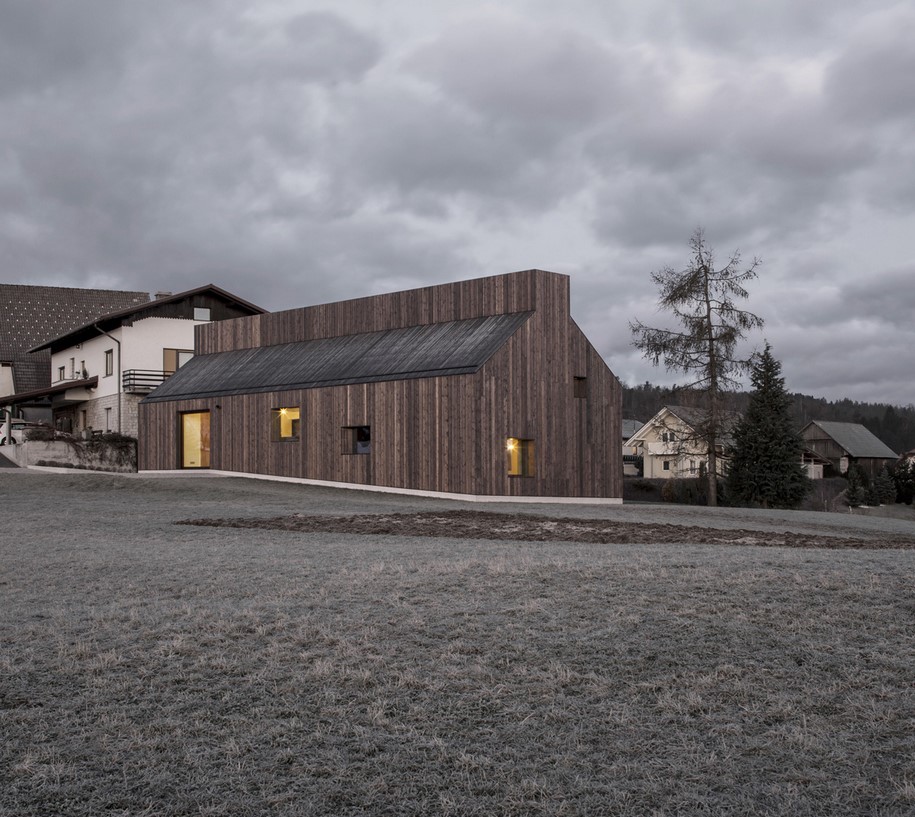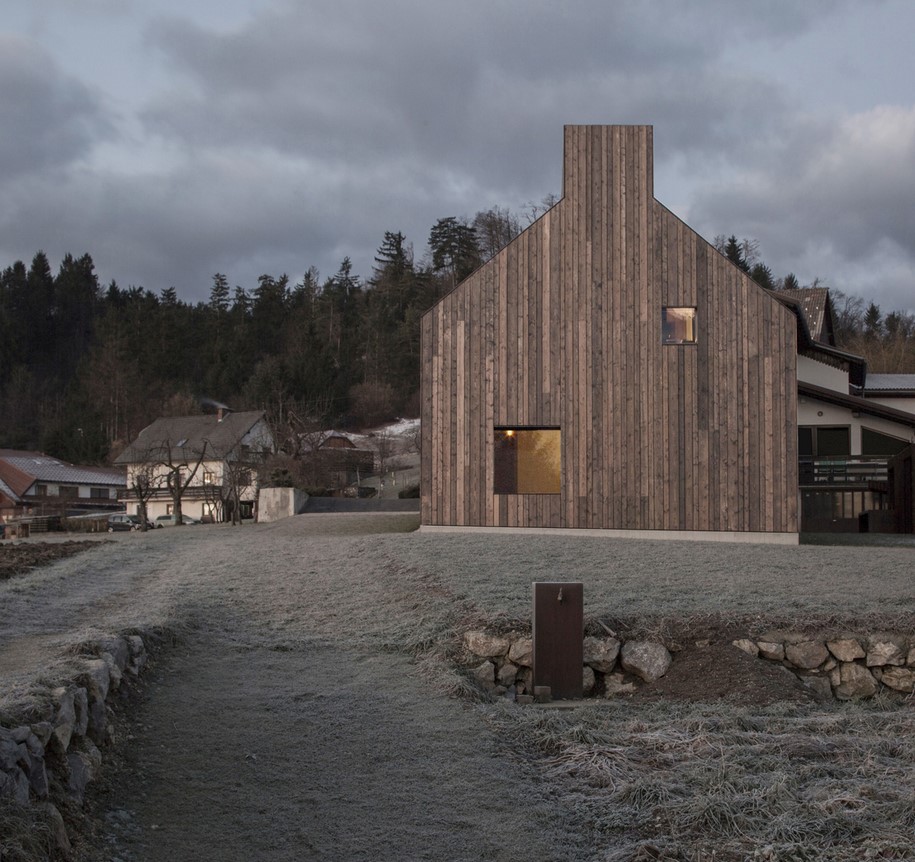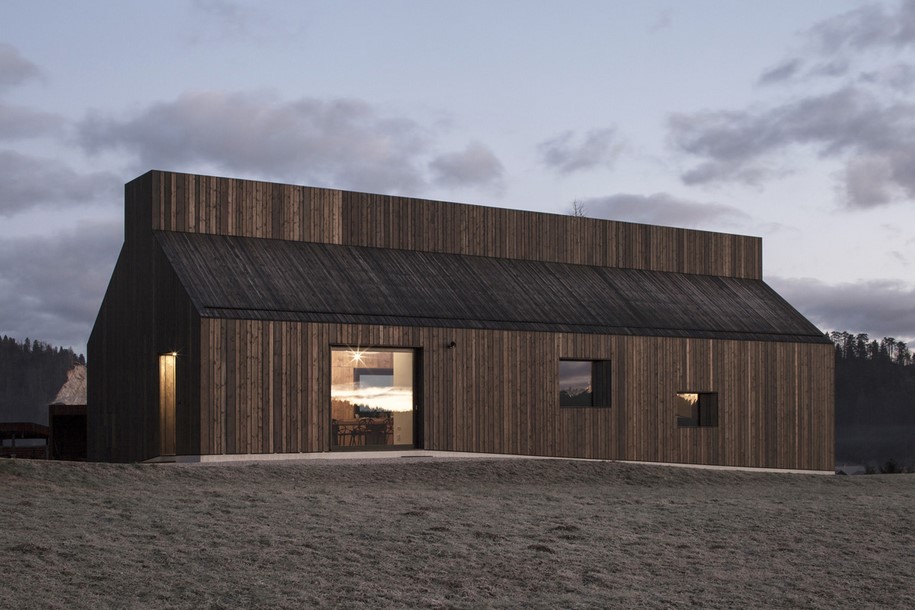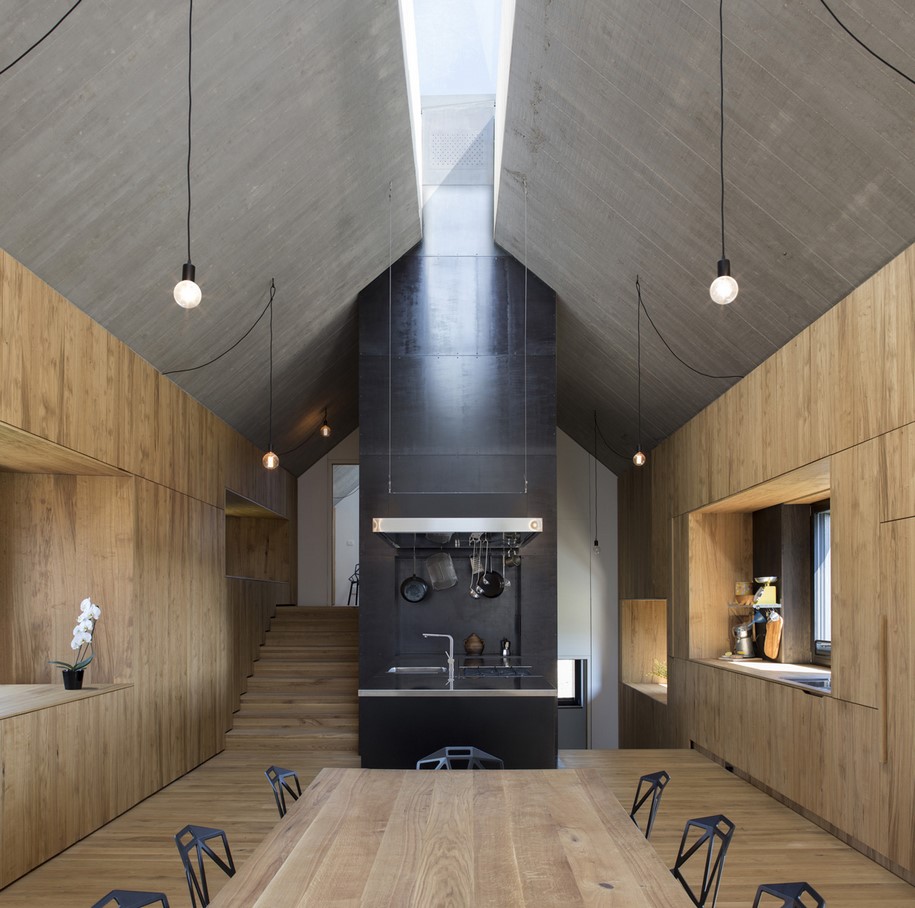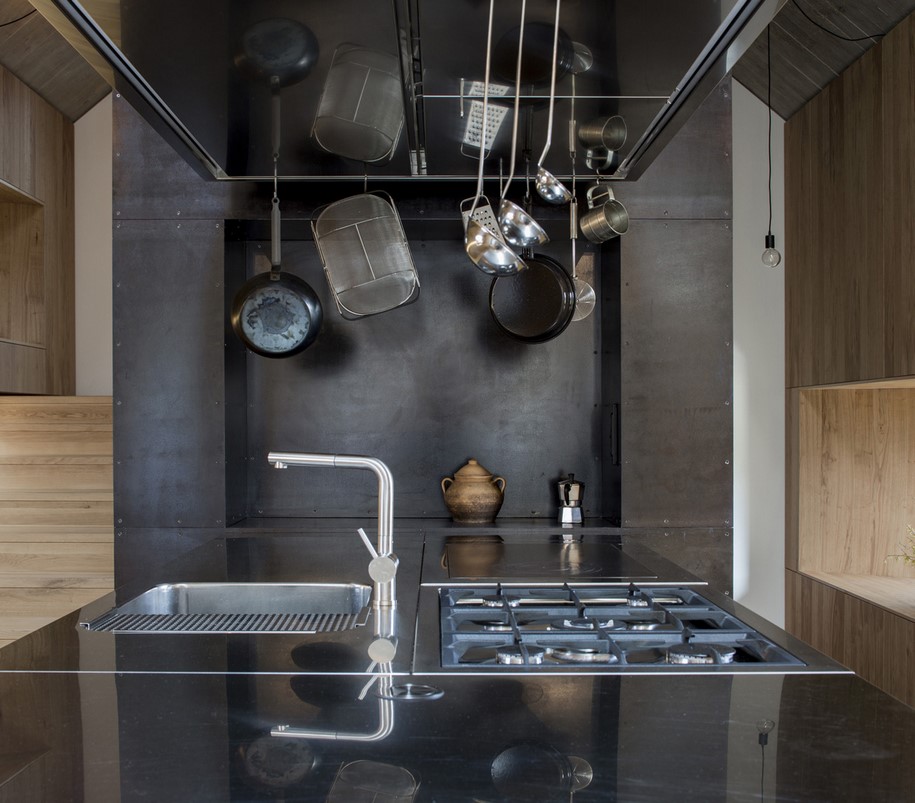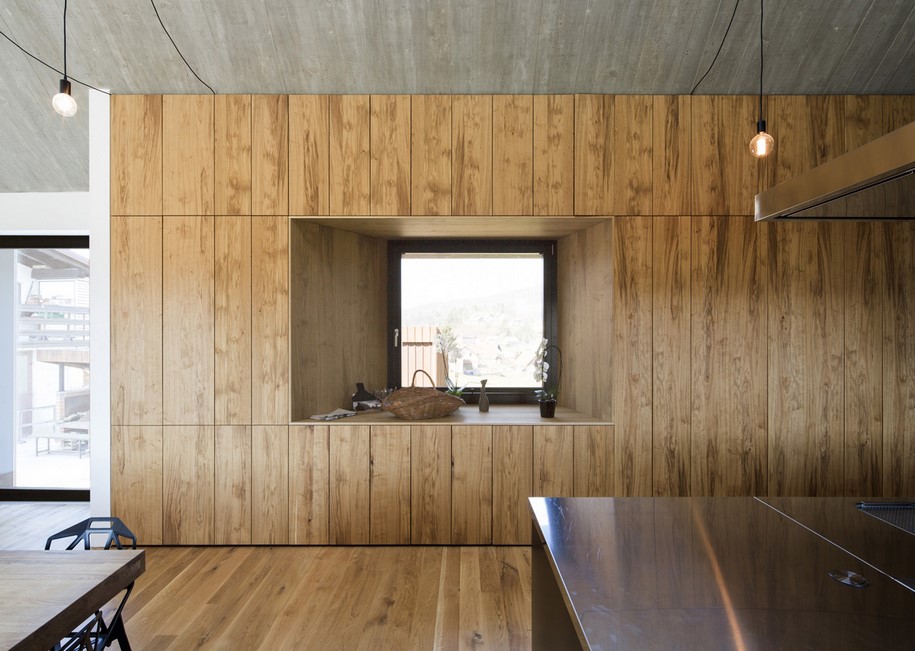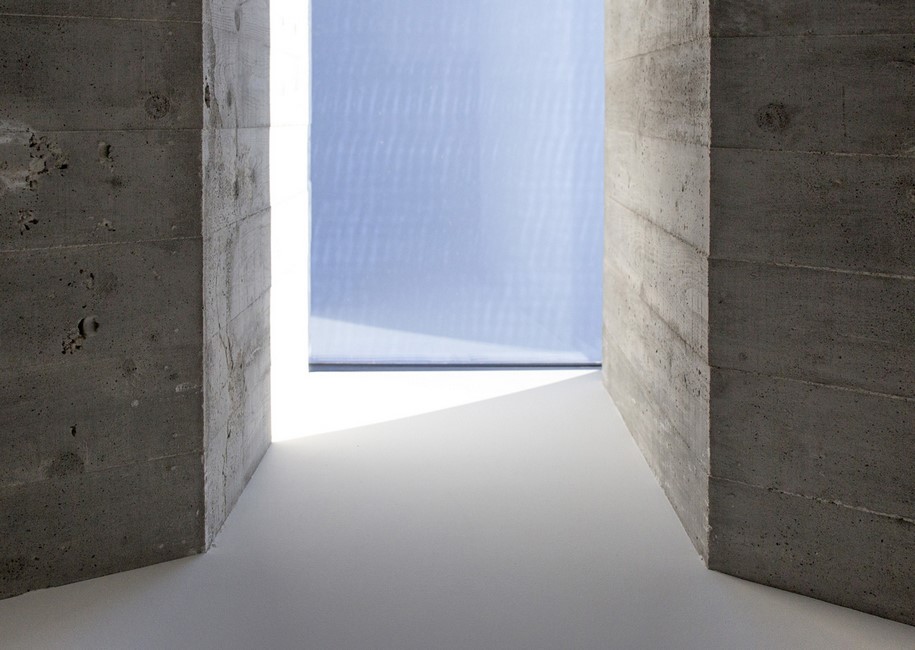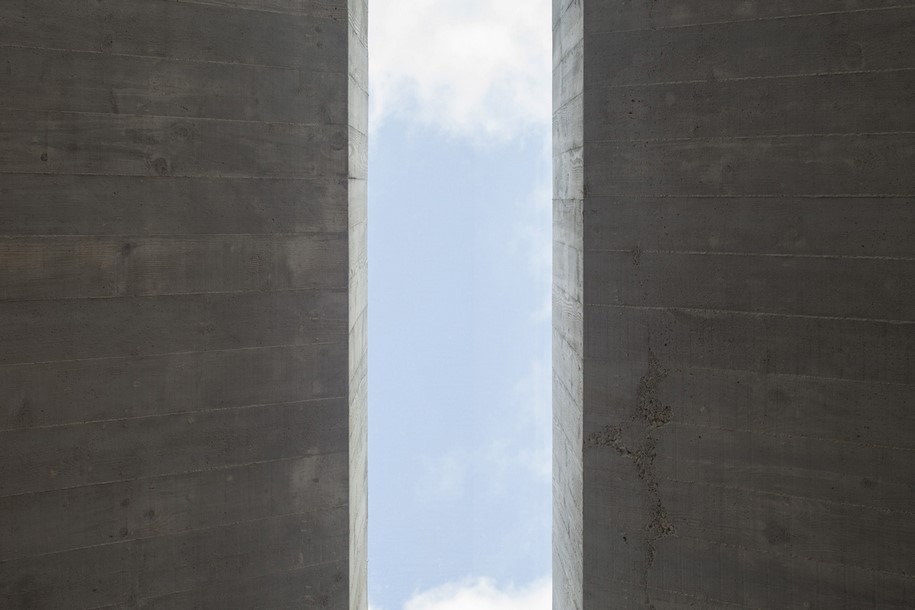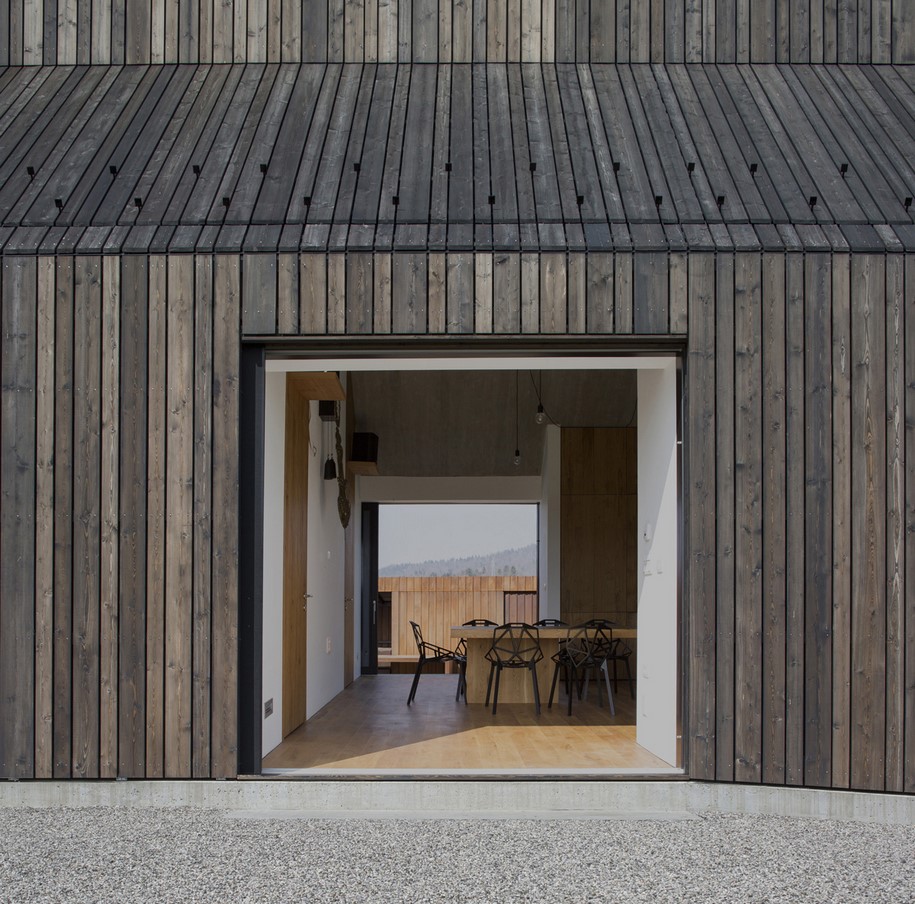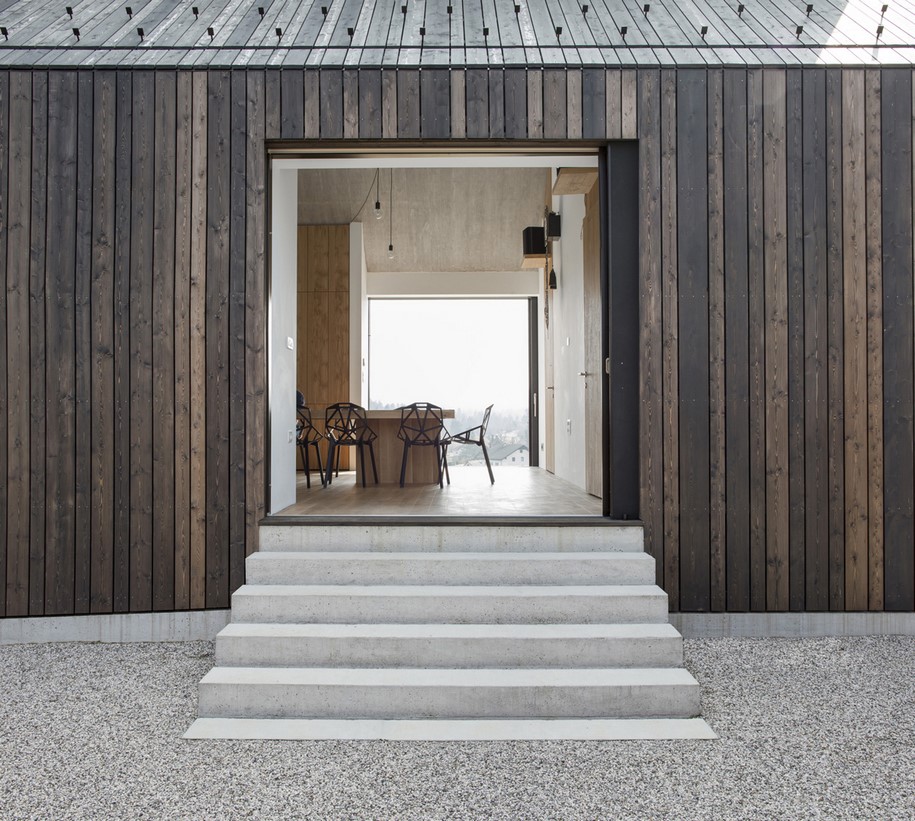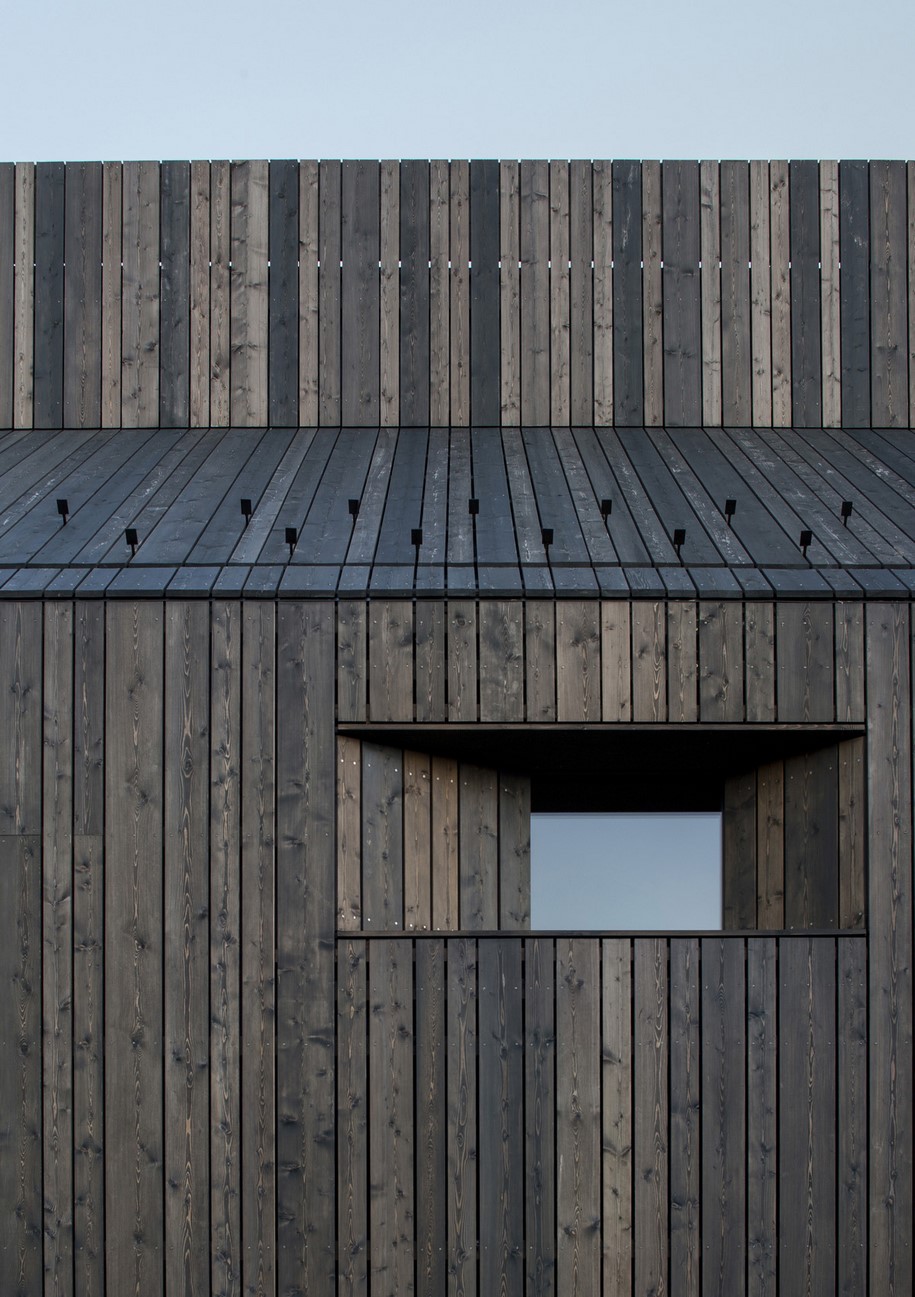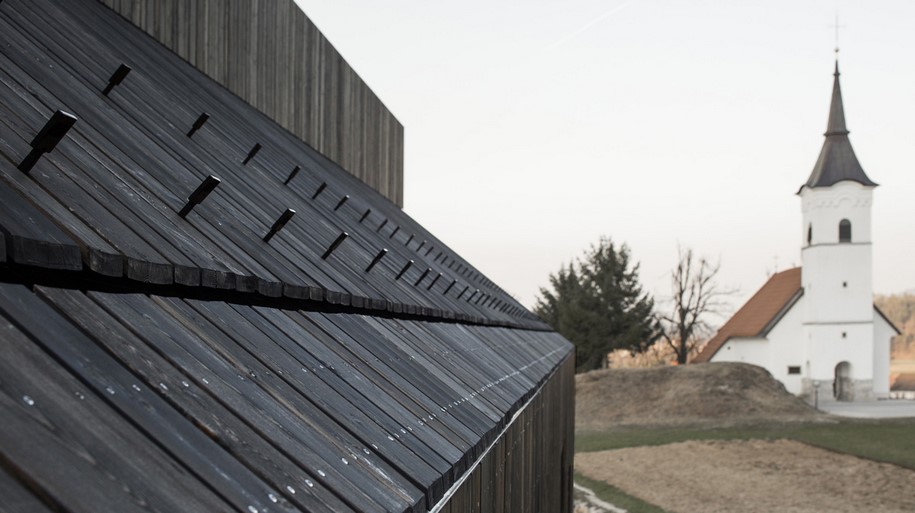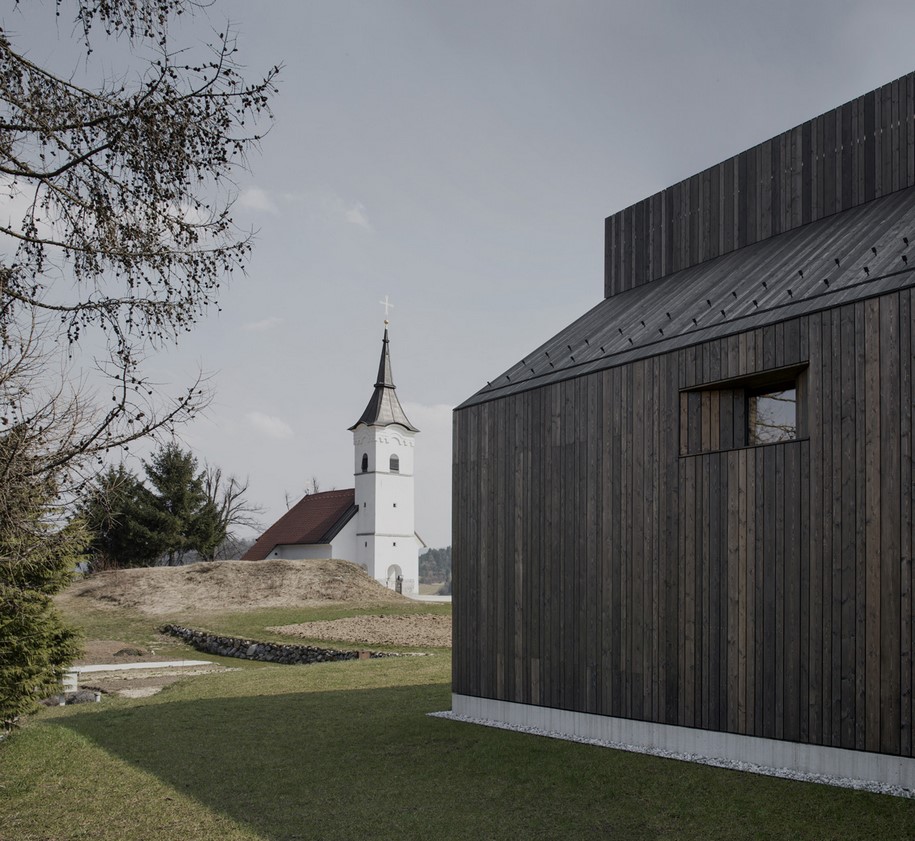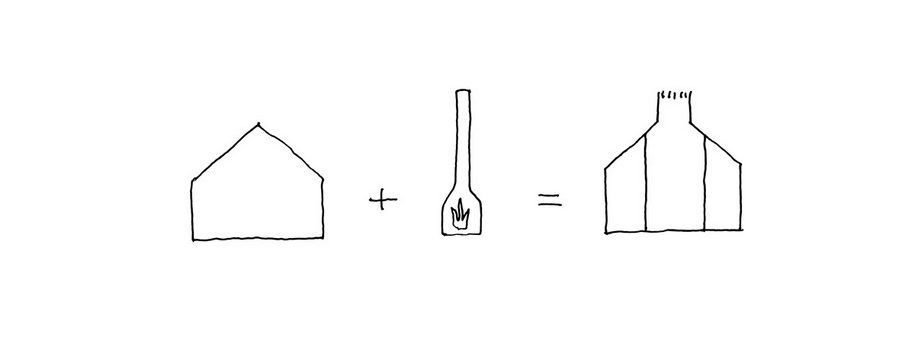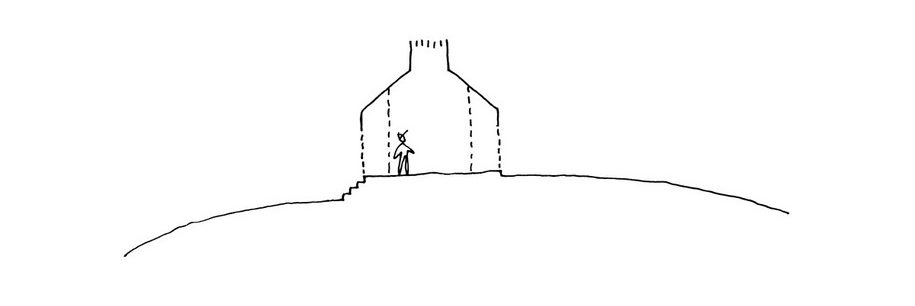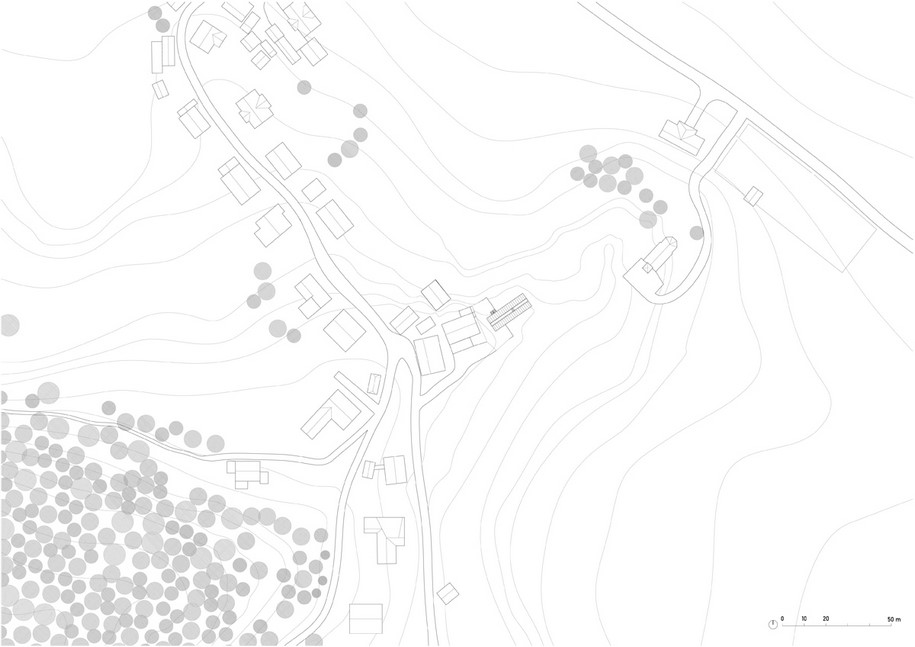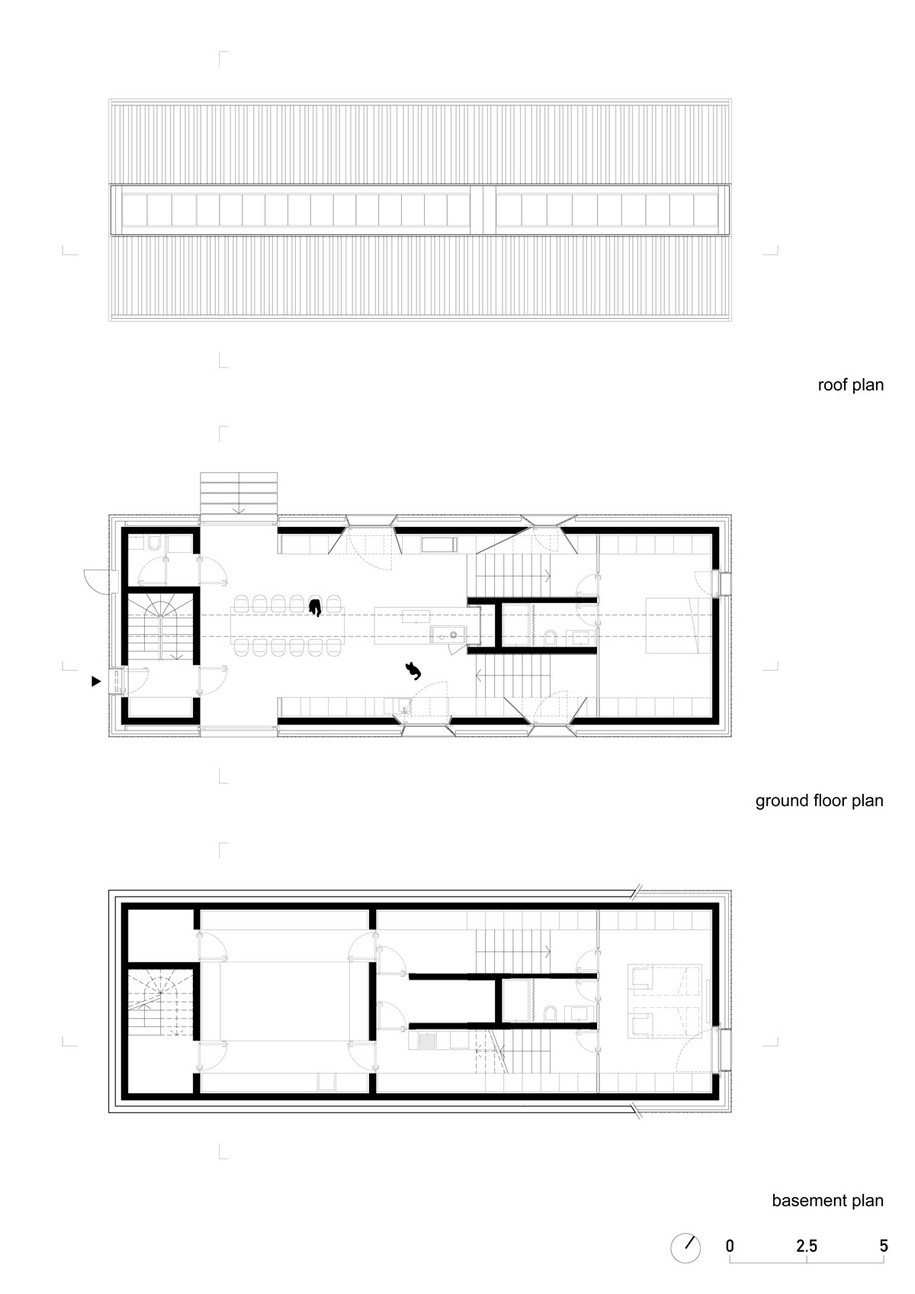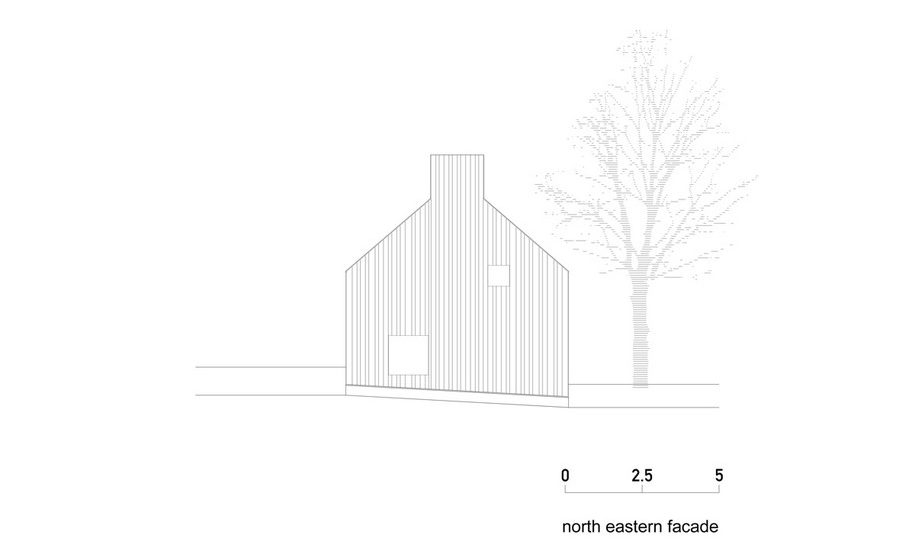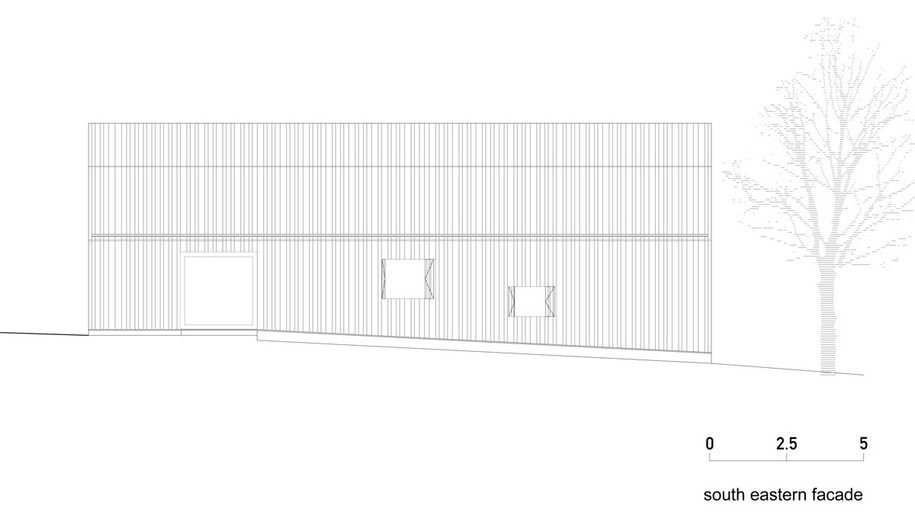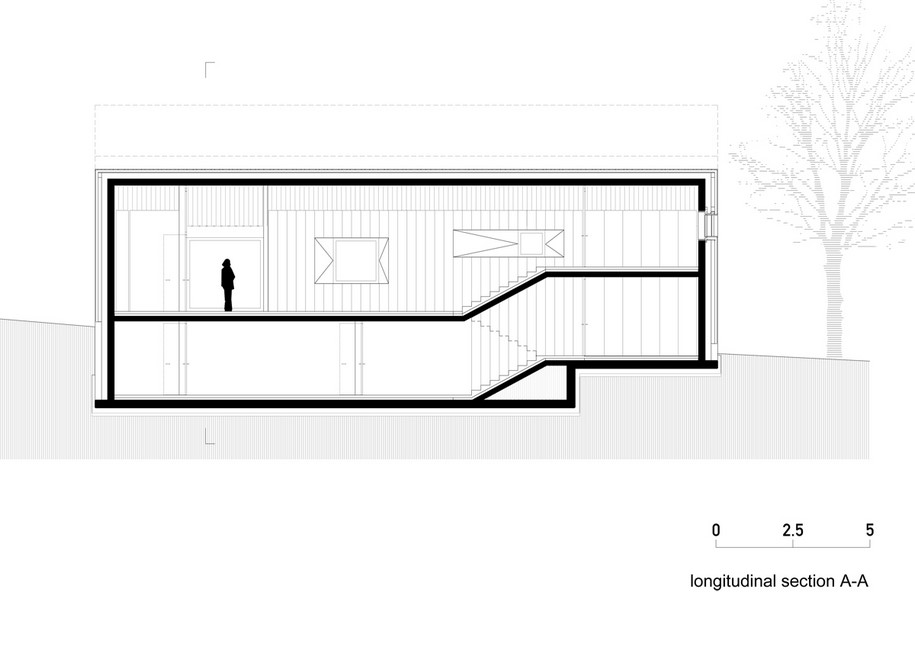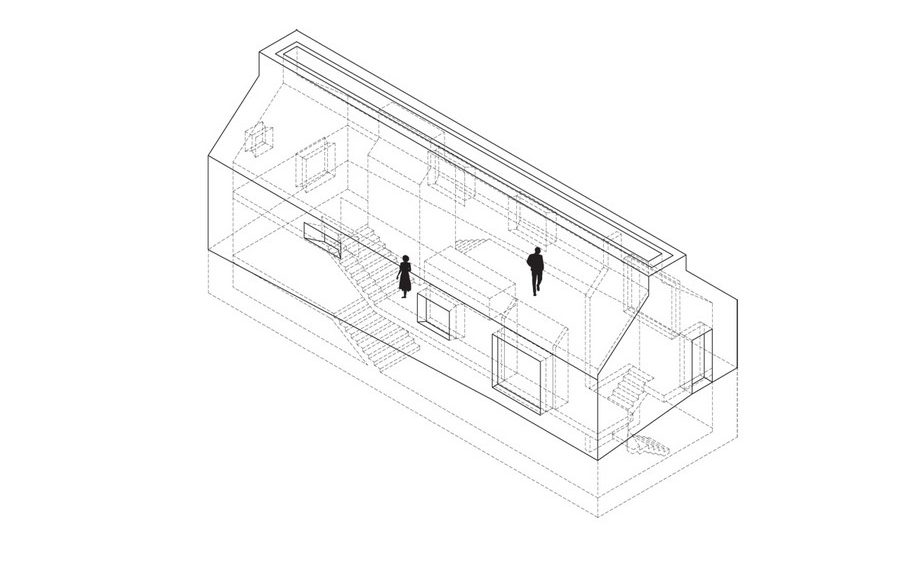Dekleva gregorič architects completed Chimney house in 2016 in Slovenia. The design of the house is based on the rules of local architecture and has references to the Slovene vernacular and critical regionalist modern architecture.
Chimney as an element of typological transformation
The design of Chimney house is primarily based on the rules of local architecture. It respects the morphology of the traditional built context, referring to the prevailing gabled roof type of the house and respecting its volumetric and material parameters.
On the other hand the Chimney house marks typological transformation generated by the users’ specificity.
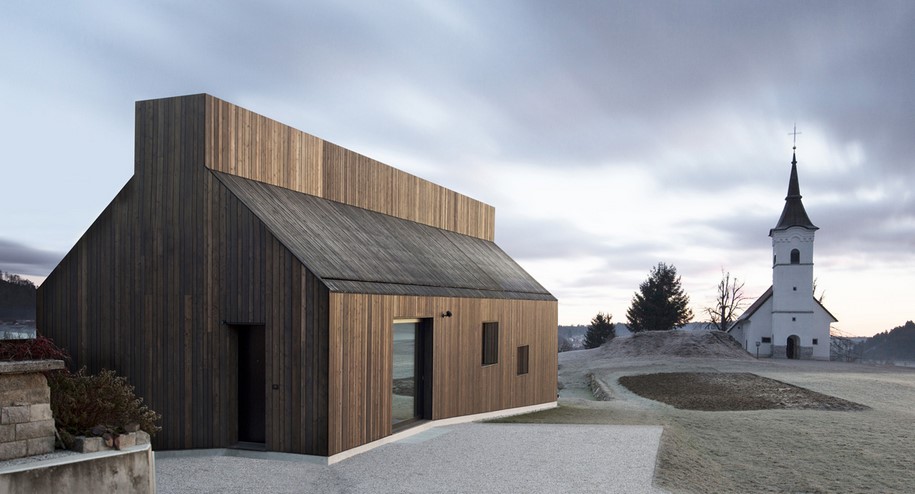
The kitchen, with a multifunctional wood stove, plays the vital role in the private and social life of a couple living in the countryside. Stove’s centrally positioned chimney determines the concept of the house informing the centrally aligned layout of spaces within the specific cross-section of the house. The ridge of the roof is pushed apart creating a continuous skylight running throughout the house’s linear volume and providing top light for all the crucial spaces.
The views from interior are curated by square windows, varying in size, that carefully perforate the volume.
Positioned on the borderline of the village it clearly relates to the adjacent wooden barn with the dark wooden materiality, but with the new distinctive volumetric identity moves deliberately away from its vernacular neighbour and curiously associates with the nearby 16th century church creating a dialogue between the two.
Oiled larch boards completely define the materiality of the outside relating to the traditional finish of the vernacular barn. Deliberate secondary wooden roof cladding provides the continuity of the dark wooden materiality of the facade cladding. The building’s envelope is developed as a thick wall integrating multiple storage spaces, secondary kitchen, and small ‘inhabitable’ window niches that carefully curate incoming light and expanding views to the surroundings.
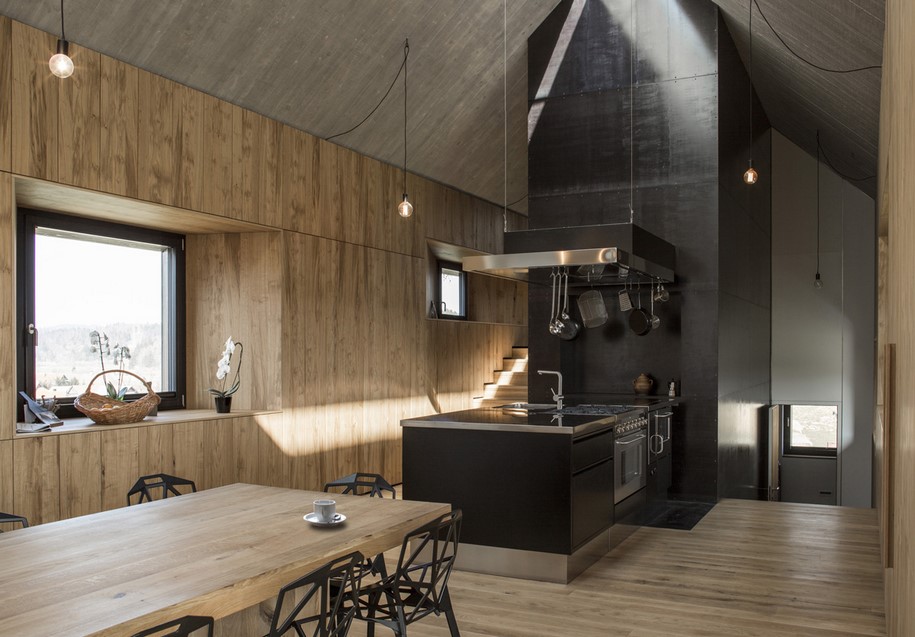
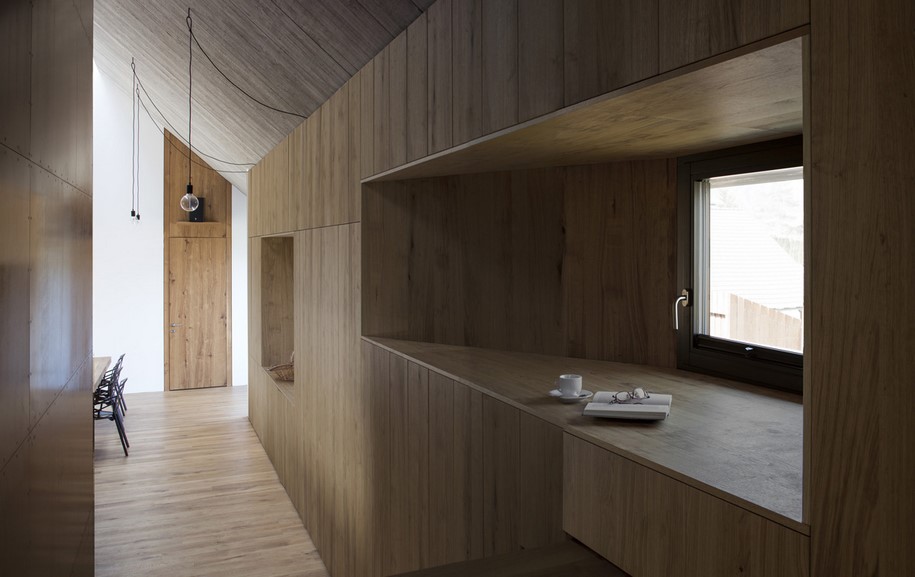
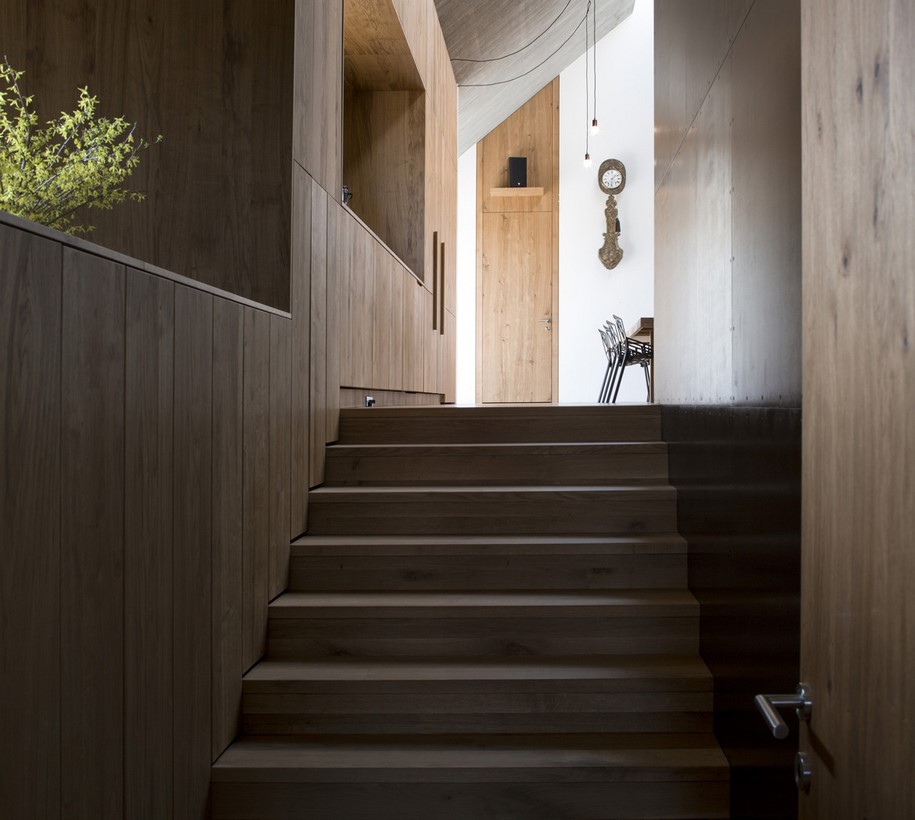
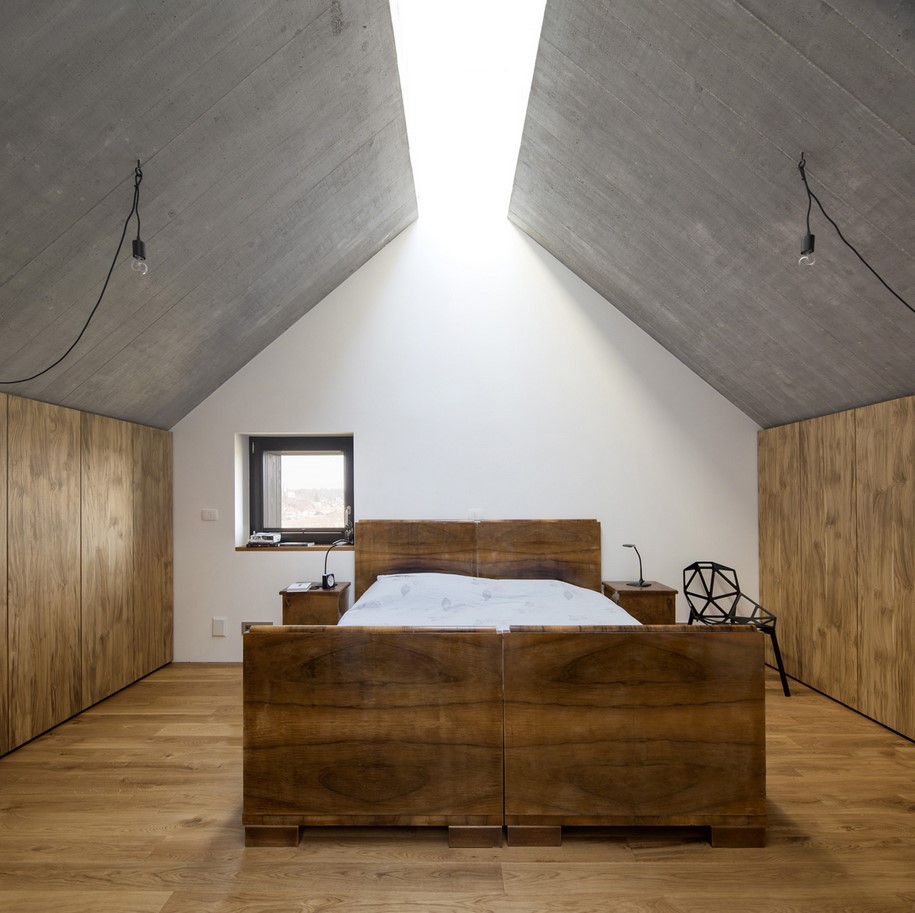
Rising the gaze, starting from the material inner envelope and moving towards the zenith, one can discover and observe ever changing condition of the sky that becomes part of everyday life in the house.
The axially conceived linear layout meets the crossing of open space: dining becomes an outdoor experience by opening both sliding glass doors on the sides
“In The Chimney House, one could easily find references to the Slovene vernacular and critical regionalist modern architecture, local craftsmanship etc. But these references aren’t as essential, as the most interesting question that poses itself is how a single archetypal architectural element became the central theme of the house and how this influenced the spatial concept, perception and the volumetric articulation of the object.
Architecture is often ‘separated’ into architectural and technical components, the technical aspect of which is usually understood as a banal necessity, or even an obstacle in expressing a ‘clean’ architectural idea. In this case the ‘technical’ aspect becomes the challenge and one of the most important bases of the project. Historically, the chimney is one of the first technological elements which appeared in architecture, along with the fireplace – the source of warmth, light and food preparation became the centre of the home. The chimney with its ‘fireplace’ gives meaning, in an archaic way, to the kitchen and dining area – the central dwelling space. … The volume of the house is, in a way, of an archetypal shape, transformed by the outline of the chimney.”
Extract from the essay ‘Transformed Archetype’ by Jure Grohar
author of the essay: Jure Grohar; published in Home by dekleva gregorič architects – Ljubljana: Museum of Architecture and Design (MAO), 2016 // p.134-137
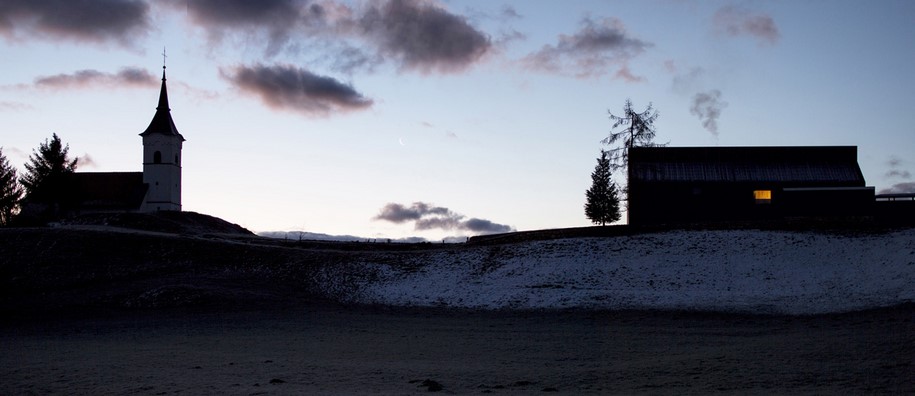
Sketches
Plans
Facts & Credits
Project name: Chimney House
Location: Logatec, Slovenia
Architecture: dekleva gregorič arhitekti
Project team: Aljoša Dekleva u.d.i.a., M.Arch. (AA Dist); Tina Gregorič u.d.i.a., M.Arch. (AA Dist);
Vid Zabel stud.arch., Primož Boršič m.i.a
Date: 2012-2016
Client: Andrej Dolenc
Site area: 830 m2
Build up area: 145 m2
Net area: 205 m2 (106 m2 ground floor + 99 m2 basement)
Photography: Flavio Coddou/
Video By Flavio Coddou
Do you want to find more ideas regarding architecture and local archetypes? Have a look at the Chapel of Silence, which shape is drawn from a careful analysis of the local archetypes that have been catalogued and reinterpreted!
READ ALSO: HOUSE FOR HOPE by Evdokia Demetriou gives shelter to homeless people
